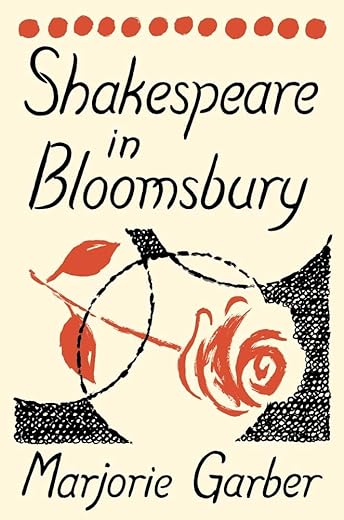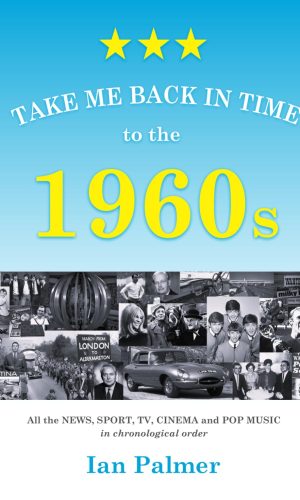Shakespeare in Bloomsbury
£19.00£23.80 (-20%)
The untold story of Shakespeare’s profound influence on Virginia Woolf and the rest of the Bloomsbury Group
“A spirited dance of minds.”―Chris Vognar, Boston Globe
For the men and women of the Bloomsbury Group, Shakespeare was a constant presence and a creative benchmark. Not only the works they intended for publication―the novels, biographies, economic and political writings, stage designs and reviews―but also their diaries and correspondence, their gossip and small talk turned regularly on Shakespeare. They read his plays for pleasure in the evenings, and on sunny summer afternoons in the country. They went to the theater, discussed performances, and speculated about Shakespeare’s mind. As poet, as dramatist, as model and icon, as elusive “life,” Shakespeare haunted their imaginations and made his way, through phrase, allusion, and oblique reference, into their own lives and art.
This is a book about Shakespeare in Bloomsbury―about the role Shakespeare played in the lives of a charismatic and influential cast, including Virginia and Leonard Woolf, Vanessa Bell, Clive Bell, Roger Fry, Duncan Grant, Lytton Strachey, John Maynard Keynes and Lydia Lopokova Keynes, Desmond and Molly MacCarthy, and James and Alix Strachey. All are brought to sparkling life in Marjorie Garber’s intimate account of how Shakespeare provided them with a common language, a set of reference points, and a model for what they did not hesitate to call genius. Among these brilliant friends, Garber shows, Shakespeare was in effect another, if less fully acknowledged, member of the Bloomsbury Group.
“A spirited dance of minds.”―Chris Vognar, Boston Globe
For the men and women of the Bloomsbury Group, Shakespeare was a constant presence and a creative benchmark. Not only the works they intended for publication―the novels, biographies, economic and political writings, stage designs and reviews―but also their diaries and correspondence, their gossip and small talk turned regularly on Shakespeare. They read his plays for pleasure in the evenings, and on sunny summer afternoons in the country. They went to the theater, discussed performances, and speculated about Shakespeare’s mind. As poet, as dramatist, as model and icon, as elusive “life,” Shakespeare haunted their imaginations and made his way, through phrase, allusion, and oblique reference, into their own lives and art.
This is a book about Shakespeare in Bloomsbury―about the role Shakespeare played in the lives of a charismatic and influential cast, including Virginia and Leonard Woolf, Vanessa Bell, Clive Bell, Roger Fry, Duncan Grant, Lytton Strachey, John Maynard Keynes and Lydia Lopokova Keynes, Desmond and Molly MacCarthy, and James and Alix Strachey. All are brought to sparkling life in Marjorie Garber’s intimate account of how Shakespeare provided them with a common language, a set of reference points, and a model for what they did not hesitate to call genius. Among these brilliant friends, Garber shows, Shakespeare was in effect another, if less fully acknowledged, member of the Bloomsbury Group.
Read more
Additional information
| Publisher | Yale University Press (28 Nov. 2023) |
|---|---|
| Language | English |
| Hardcover | 400 pages |
| ISBN-10 | 0300267568 |
| ISBN-13 | 978-0300267563 |
| Dimensions | 16.43 x 2.31 x 24.08 cm |












by Roman Clodia
Anyone working in early modern literature, culture and history owes a profound debt to Garber and her sometimes groundbreaking existing work so it’s sad that this book isn’t more exciting. The idea is fabulous: to plot the presence of Shakespeare in the writings, work and leisure pursuits of the Bloomsbury Group. And Garber is as rigorous and meticulous as ever in tracing these… um… traces – but that’s all this is, at heart: recording snippets, vague allusions and throwaway comments like ‘… seated round the table with our visitors like the witches from Macbeth’, or ‘waved her arms and shouted, her white hair flying like King Lear’s’.
There’s no question that this well-educated (even if not formally, in the case of the girls – something Virginia Woolf always resented), intellectual, artistic group all knew their Shakespeare and quoted lightly as an everyday thing – but so did most other well-educated people of the period. This was a time when Shakespeare was deemed the pre-eminent English writer and ‘genius’ and his words permeated everyday speech. There’s nothing special, it seems to me, about the Bloomsberries and their easy relationship with Shakespeare.
In fact, other writers are frequently mentioned and it would be almost as valid to suggest that Tennyson or Donne were a member of Bloomsbury: ‘when Carrington painted her famous portrait of Lytton Strachey – reclining at ease, holding a book in his long thing fingers – he posed for her while reading aloud from Donne and Shakespeare.’
The most interesting sections for me were about those people on the edge of Bloomsbury proper and the visualisation of Shakespeare’s work: Ellen Terry’s roles on the stage, the photos of Julia Margaret Cameron who used live models, sometimes young Bloomburyites, to make photographic tableaux of Shakespearean characters and scenes.
The book ends with a slightly grumpy coda which laments that our generation, unless academic/theatre specialists, doesn’t generally either use or recognise Shakespearean references or allusions in the same way. I would partially disagree: they may not be recognised but Shakespeare permeates English from ‘green-eyed monster’ (Othello) to ‘something wicked this way comes’ (Macbeth), to ‘the world is my oyster’ (Merry Wives of Windsor) to ‘wild goose chase’ (Romeo and Juliet) and ‘brave new world’ (The Tempest). Instead, Garber asserts, contemporary engagements with Shakespeare are via adaptations such as the short-lived Hogarth Shakespeare series. Maybe the situation is different in the US but here Shakespeare is still being acted continuously, not least at The Globe. But Garber is right that this may not be the direct and casual exchange of Shakespeare that was a shared language amongst the Bloomsberries.
By the end, though, I was wondering what this book proves: that the Bloomsberries knew their Shakespeare well, and especially from reading rather than watching the plays? – yes, for sure. But did we expect anything else? There’s a lack of any kind of intellectual framing to this book: it could have been a work of reception but the evidence is too sparse in terms of slight references in passing, and the users too diverse: not just the core Bloomsburyites but those on the margins and the second generation. And the term ‘reception’ isn’t used.
In the end, this is a slightly oblique return to the lives of this fascinating group with Shakespeare as a kind of glue to tentatively hold the whole thing together. I’d see this as an enabling work where Garber’s done the hard work of accumulating all these traces of Shakespeare and other scholars may do the analysis to transform this into something intellectually meaningful. Nevertheless, Garber’s delight is evident and there’s a certain charm to the whole enterprise.